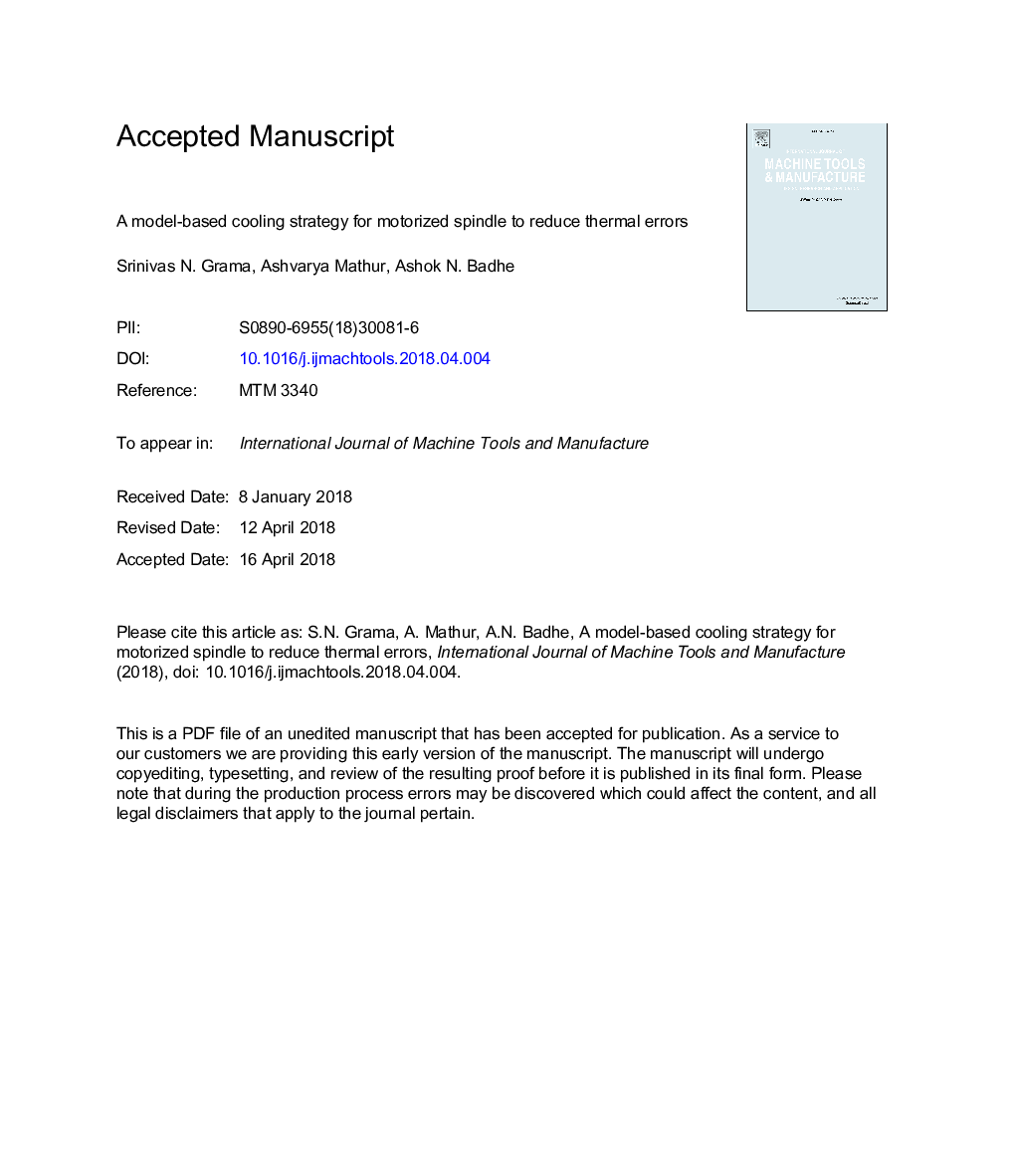| Article ID | Journal | Published Year | Pages | File Type |
|---|---|---|---|---|
| 7173329 | International Journal of Machine Tools and Manufacture | 2018 | 38 Pages |
Abstract
Thermal errors constitute a significant portion of overall machining errors observable on any machined component, especially if produced through high-speed machining. Major reasons for these thermal errors are from the distortion of the spindle and/or other machine tool components from their respective reference positions, which in turn, is due to change in temperature of machine tool components. The heat generation within the spindle due to internal sources such as motor and bearings can be regarded as the main culprit, especially at high cutting speeds. Although conventionally, cooler units with Ambient temperature Tracing Strategy (ATS) are employed to extract heat from the spindle, they are not very effective when accuracy and precision of machined components are of utmost importance. In this paper, research work is presented wherein, the effectiveness of cooling is significantly improved by employing a model-based control strategy on a traditional bath recirculation cooler unit. This strategy, called Cooler Trigger Model (CTM), involves dynamically controlling the switching frequency and the switch 'ONâ² time of cooler compressor so that the heat extraction is in accordance with the heat generation. Specifically, the approach is based on a macro model involving a combined heat power and energy criteria wherein the former criterion is analogous to a conventional 'ON-OFFâ² controller with the exception that the field variable is chosen as heat rate (extraction with respect to generation) instead of temperature. Meanwhile, the heat energy criterion pitches in to limit cooling in the spindle due to a few design and operational constraints. In order to illustrate the effectiveness of CTM strategy, a comparative mathematical analysis of ATS and CTM cooling strategies is performed for Environment Temperature Variation Error (ETVE) test. Further, it is shown that CTM strategy is advantageous with respect to the motor and bearing temperature stabilization for a wide range of spindle speeds, thereby leading to significant reduction of thermal errors when compared with ATS.
Related Topics
Physical Sciences and Engineering
Engineering
Industrial and Manufacturing Engineering
Authors
Srinivas N. Grama, Ashvarya Mathur, Ashok N. Badhe,
